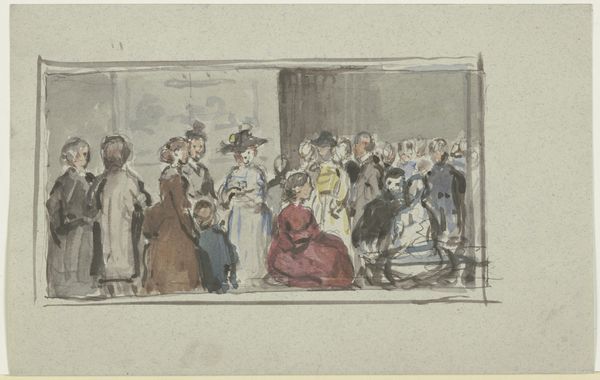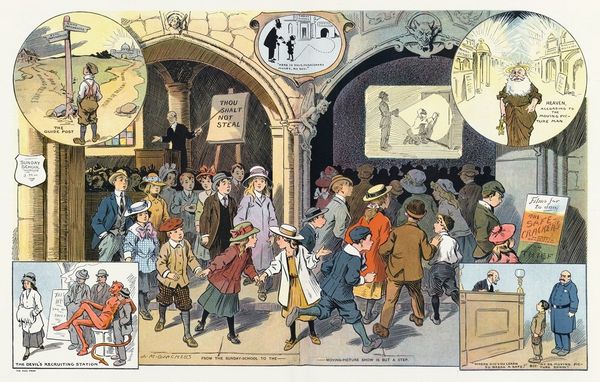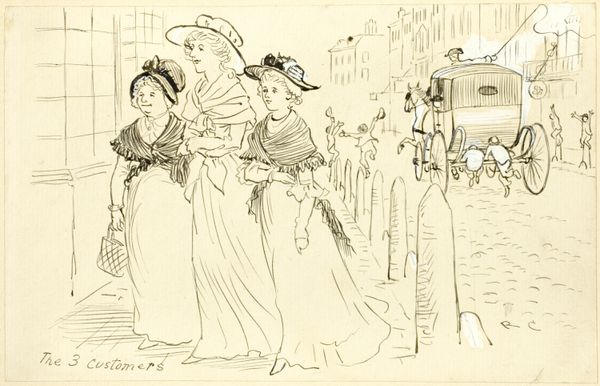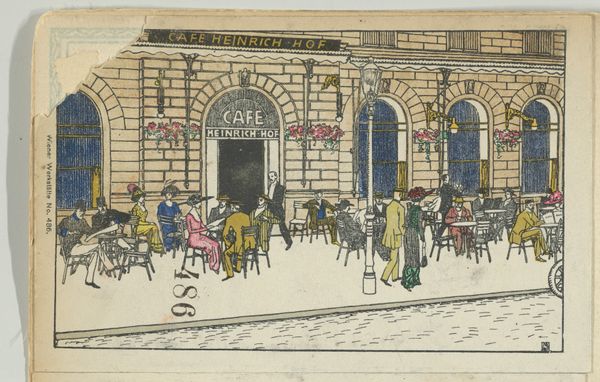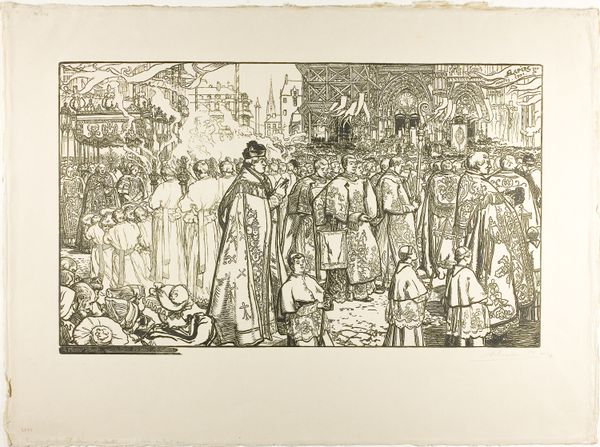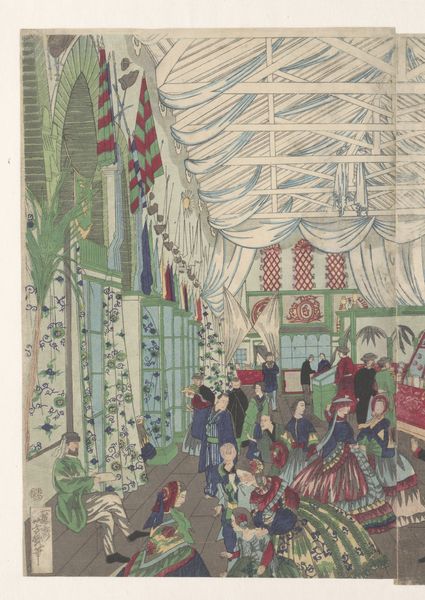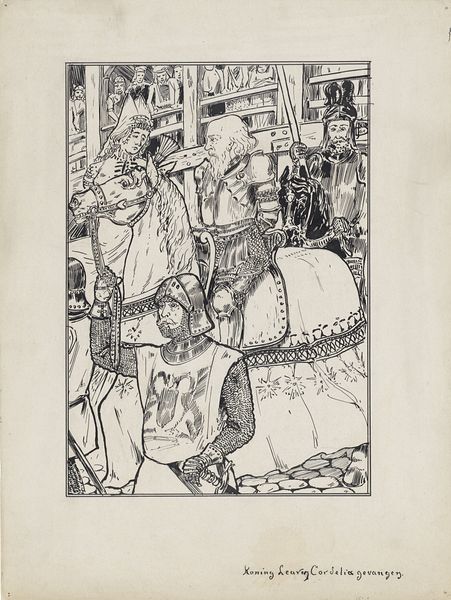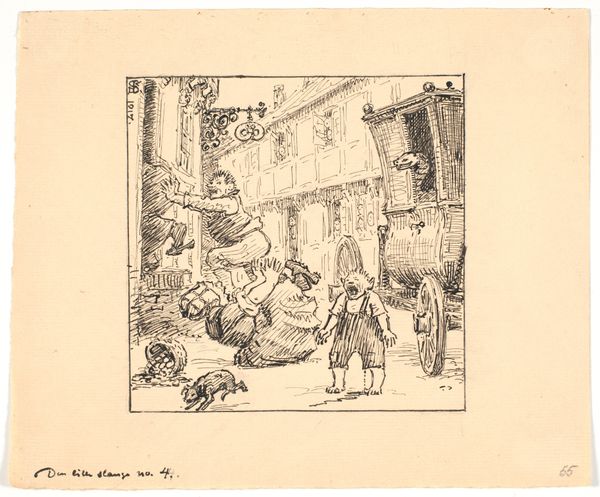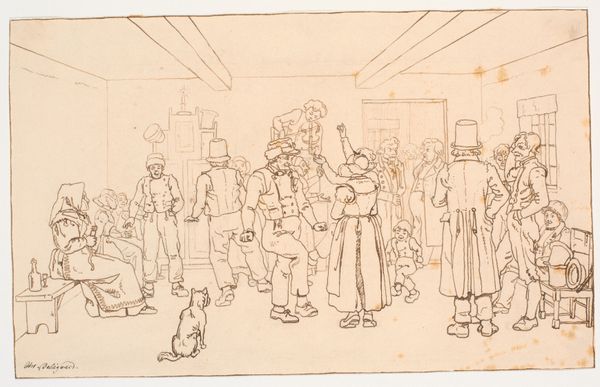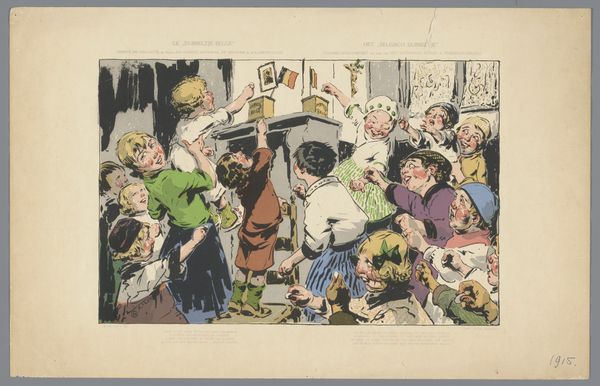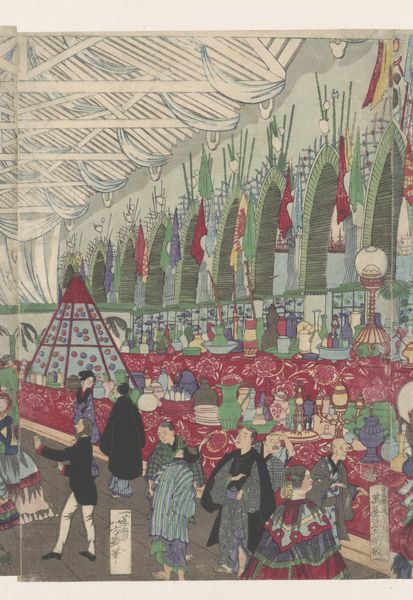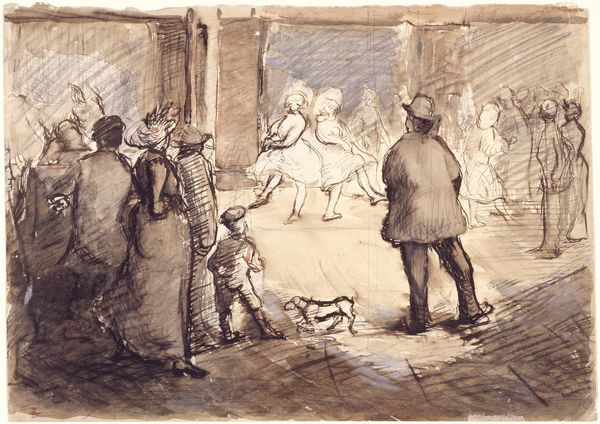
drawing, ink, pen
#
drawing
#
pen illustration
#
ink
#
romanticism
#
orientalism
#
pen
#
cityscape
#
genre-painting
Dimensions: 210 mm (height) x 267 mm (width) (bladmaal)
Martinus Rørbye created "Ved Toppana Moskeen," a watercolor and pencil drawing, during a transformative period of cultural exchange and Orientalism in the 19th century. Rørbye, a Danish artist, ventured into Ottoman lands, and what we see is his interpretation of a mosque in Istanbul. It’s a scene bustling with people engaged in their ablutions and prayers. The artist pays close attention to the architecture of the Mosque, but it's also worth considering how Rørbye positions himself—and by extension, his European audience—in relation to the Islamic world. The gaze is both curious and distanced, capturing an exterior view of a culture that was both exoticized and misunderstood in the West. How does Rørbye navigate the space between observer and participant, and what does this tell us about the broader dynamics of cultural encounter during this era? The drawing serves not only as a visual document of a specific time and place but also as an invitation to reflect on the complex interplay between identity, representation, and the politics of seeing.
Comments
No comments
Be the first to comment and join the conversation on the ultimate creative platform.
